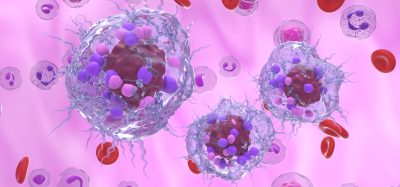USC researchers zoom into human genome with mammal DNA
Posted: 12 May 2023 | Drug Target Review | No comments yet
USC researcher Dr Steven Gazal and his team have identified human genome base pairs that have remained constant over millions of years of mammalian evolution. These base pairs are linked to human disease. Using DNA from 240 mammal species, they identified genetic variations affecting an individual’s survival and reproduction.


In a recent study, published in a special Zoonomia of Science. Dr Steven Gazal, Assistant Professor of Population and Public Health Sciences at the Keck School of Medicine of University of Southern California, US, has achieved a significant breakthrough by accurately identifying the human genome’s base pairs that have remained constant for millions of years of mammalian evolution. These base pairs are crucial in causing human disease.
Using an unprecedented level of resolution, Gazal and the research team scrutinised DNA from 240 mammalian species, including humans. Through this analysis, they were able to pinpoint base pairs that remained consistent, or “constrained,” throughout mammalian evolution. These genetic variations, which could negatively impact an individual’s ability to survive and reproduce within their species, were identified in individuals with mutations in these genes. “We were able to identify where gene mutations are not tolerated in evolution, and we demonstrated that these mutations are significant when it comes to disease,” added Gazal.
The team discovered that a considerable 3.3 percent of bases in the human genome are “significantly constrained,” which includes 57.6 percent of the coding bases responsible for determining amino acid position. This indicates that these bases have an unusually low number of variants across species in the dataset. The base pairs that were identified as the most constrained in mammals were over seven times more likely to be responsible for causing human disease and complex traits. When the researchers focused solely on the most constrained base pairs in primates, this likelihood increased to over 11 times.
Gazal said “we do not understand 99 percent of the human genome, so it is fundamental to understand which part has been constrained by evolution and is likely to have an impact on human phenotypes.” Gazal and the research team’s findings and techniques have considerable potential as fundamental resources for future investigations.
Gazal and his team’s next course of action involves replicating the process using a dataset that includes only primates. By limiting the subjects to primates, they aim to concentrate on the DNA functions that emerged more recently in human evolution. “We expect this to be even more useful in determining information on human disease,” concluded Gazal.
Related topics
Drug Discovery, Drug Discovery Processes, Gene Testing, Gene Therapy, Genetic Analysis, Genome Editing, In Vivo, Organoids, Small Molecules, Targets
Related conditions
Brain disease
Related organisations
University of Southern California
Related people
Steven Gazal








